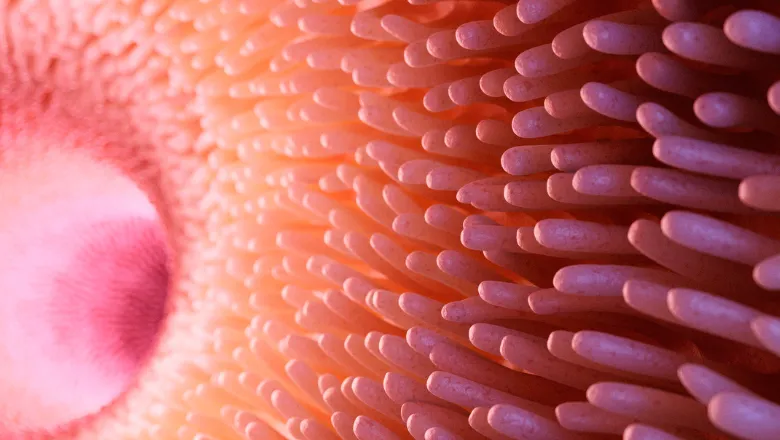Our data was derived largely from undirected computational analysis of human tissues that has the capacity to generate unanticipated findings. The unexpected outcomes have helped us to understand how the gut immune system interacts with the vast intestinal microbiota. We propose that the body could be exposed to DNA from bacteria, a key autoantigen in the autoimmune disease lupus, if these components of the intestinal immune system fail.
Professor Jo Spencer
17 May 2024
Features of autoimmune diseases found to be normal components of gut immunity
Researchers have found that cell types and molecules usually associated with autoimmune disease are present in the gut at sites where bacteria normally meet the immune system

Researchers in the Peter Gorer Department of Immunobiology have identified that features of the immune system that were previously considered to be characteristics of autoimmune diseases are normal components of the immune system in human gut that interact with each other alongside bacteria.
The authors used a combination of spatial transcriptomics and multiplexed single-cell technologies to pinpoint a B cell subtype in normal intestinal lymphoid tissue that is otherwise known for its enrichment in the blood in patients with the autoimmune disease lupus. When in the gut, these ‘DN2’ B cells interact with dendritic cells co-expressing the lupus autoantigens DNASE1L3 and C1q, adjacent to bacteria.
The normal functions of DN2 B cells, DNASE1L3 and C1q in the gut are likely to relate to bacterial recognition, bacterial killing and disposal of bacterial debris including DNA. Failure of such a system could result in persistence of bacterial DNA that could stimulate an autoimmune response.
The link between gut bacteria and autoimmunity has been challenging to understand. The authors hope that by identifying the way that the immune system normally handles bacteria in the gut could be key to the prevention of certain auto-immune diseases.
You can access the full article in Nature: https://doi.org/10.1038/s41467-024-48267-4

